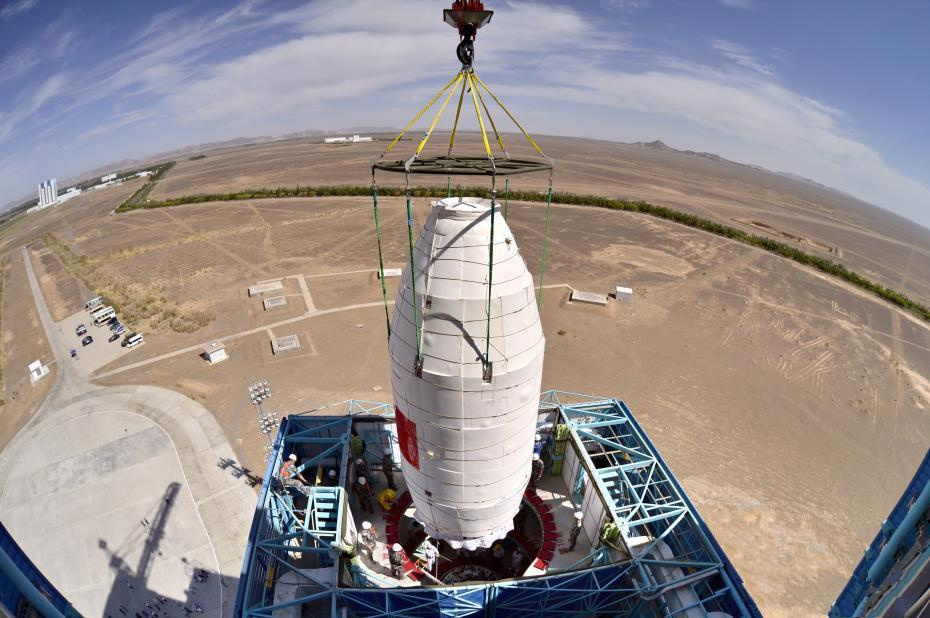

China's first self-developed X-ray observatory, the Hard X-ray Modulation Telescope (HXMT), was successfully launched at 11 am on June 15 atop a Long March 4B carrier rocket at the Jiuquan Satellite Launch Center in Northwest China. Three other domestic and foreign satellites also blasted off atop the same rocket, which marked the 248th flight by a Long March carrier rocket.
Weighing 2,500 kg, the HXMT is designed to work at least four years in a low-Earth orbit about 550 kilometers above the ground. It carries a trio of high, medium and low energy X-ray telescopes, as well as a space environmental detector. The satellite is capable of performing scan surveys of large areas of the sky and doing pointed observations with high precision, observing X-rays/hard X-rays from celestial objects in 1-250keV, and detecting hard X-ray/soft gamma-ray bursts in 200keV-3MeV. Through the three working modes of sky survey, pointed observation and small-scale scanning, the HXMT can perform broad band, high sensitivity and high resolution X-ray observations.
The satellite should be able to carry out cutting-edge scan surveys of dim and weak variable sources, as well as quick multi-wavelength observations, which will help make China one of the leading countries in high energy astrophysics research.
Once in orbit the HXMT will mainly study compact stars and burst phenomena including black holes, neutron stars and gamma-ray bursts. It aims to detect new high-energy variable sources and new activities of known high-energy objects through scanning the galactic plane; deepen the understanding of the dynamics and high-energy radiation processes in the gravitational field of compact stars and black holes through observing and analyzing the optical variability and energy spectra properties of high-energy objects, such as black holes and neutron stars; and acquire energy spectra and time-varying observational data of gamma-ray bursts and other burst phenomena in the hard X-ray/soft gamma-ray energy range. The satellite will study the processes occurring in deep space where the collapse of very massive stars at the end of their lifecycle and the merger of neutron stars result in the formation of black holes.
The new satellite will further boost China's astronomical research and deepen mankind's understanding of extreme physical processes that occur in the universe.

The HXMT satellite is ready for launch. (Image by China Academy of Space Technology, China Aerospace Science and Technology Corporation)
Sources: Xinhua, CAS